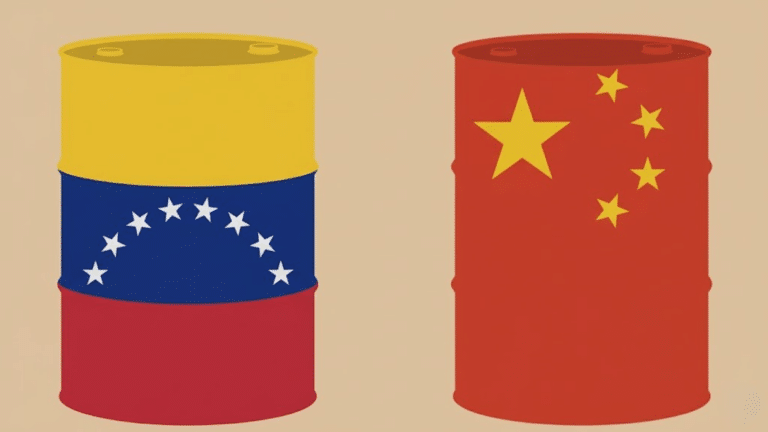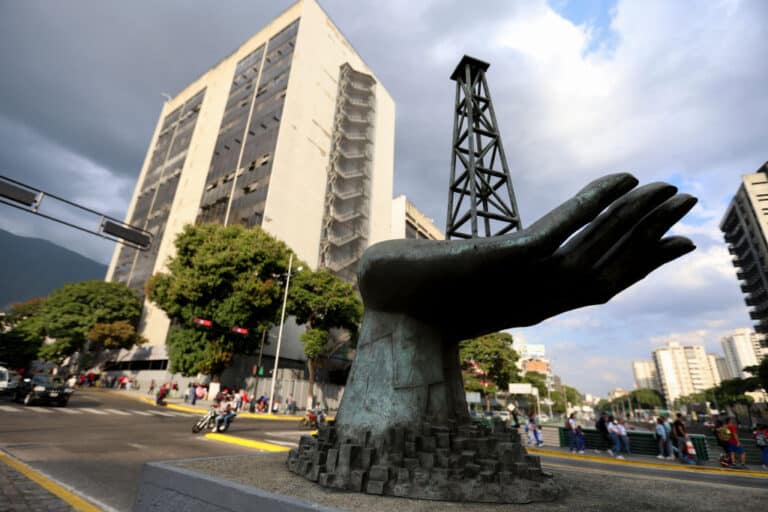On with Kara Swisher: Venezuela After Maduro, Can Trump Control Caracas From Afar?
The arrest of Venezuelan President Nicolas Maduro, on Saturday, sent shockwaves across the globe. And although the targeted military operation was a success, th
Current Access Level “I” – ID Only: CUID holders, alumni, and approved guests only
Reports by Alex Clark & Philippe Benoit • February 03, 2022
This report represents the research and views of the authors. It does not necessarily represent the views of the Center on Global Energy Policy. The report may be subject to further revision.
The Center on Global Energy Policy would like to thank the Hewlett Foundation for their gift to CGEP in support of research related to state-owned enterprises. Contributions to SIPA for the benefit of CGEP are general use gifts that allow the Center discretion in how the funds are allocated and to ensure that our research remains independent, unless otherwise noted in relevant publications. More information is available at Our Partners.
(This list is updated periodically)
Air Products
Anonymous
Jay Bernstein
Breakthrough Energy LLC
Children’s Investment Fund Foundation (CIFF)
State-owned enterprises (SOEs) play a major role in the production of goods and services across many of the world’s largest economies, particularly in electricity generation, oil and gas, and heavy industry. SOEs (defined in this report as companies for which 50 percent or more of voting shares are held by a government) are also major sources of greenhouse gas emissions.
The governments that control these SOEs are also signatories to the Paris Agreement on climate change. State ownership provides these governments with a major direct point of control over the climate and energy outcomes of these companies, both in terms of reducing emissions and directing future investment into low-carbon technologies and infrastructure. Improving the measurement of SOEs’ contribution to both national and global-level emissions provides important information to help understand to what extent SOEs should be targeted and to design strategies to maximize their potential role in the broader energy transition.
This report provides an accounting of direct emissions associated with SOEs globally. It is challenging to comprehensively identify every SOE, as the total is estimated at well over 100,000. In addition, most identified SOEs do not disclose their emissions nor are estimates of these emissions available in the public domain. Despite these limitations, data compiled for this report covering almost 300 major SOEs suggest that SOEs globally are responsible for at least 7.49 gigatons of carbon dioxide equivalent (GtCO2e) annually in direct (Scope 1) emissions. While the true scale of SOE-related emissions is likely to be substantially higher, particularly when accounting for national oil companies and iron and steel manufacturers that do not currently report their emissions, this figure is over 1 GtCO2e greater than various previous estimates, and larger than the total annual emissions of any country except China.
Additional findings from this report include the following:
The US intervention in Venezuela may jeopardize both the flow of discounted Venezuelan oil to China's teapot refineries and the role of Chinese oil companies in Venezuela’s upstream business.

In discussing the dramatic seizure of Venezuelan President Nicolás Maduro and his wife, Cilia Flores, over the weekend, President Donald Trump declared that the United States would now “take back” the country’s oil. Yet he has offered little clarity on what exactly this means.

The country could see a relatively rapid recovery of some oil production, depending on the leadership that emerges.

Full report
Reports by Alex Clark & Philippe Benoit • February 03, 2022